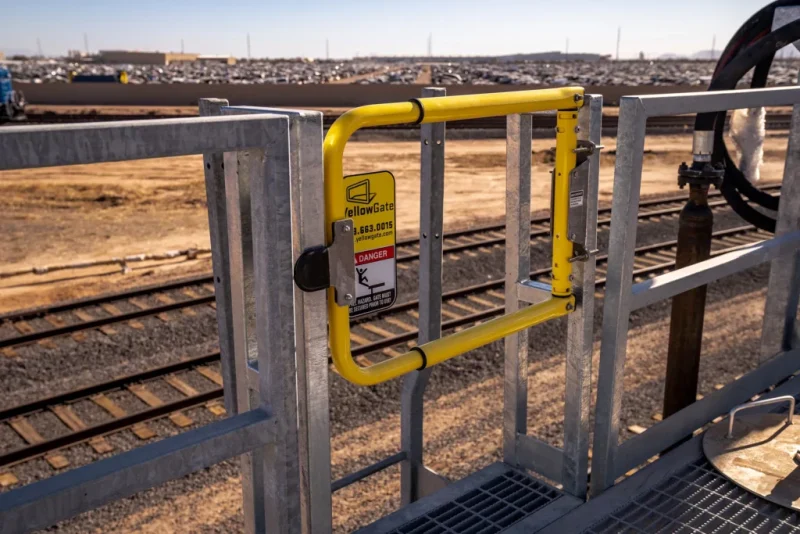Why Equipment Downtime is Costing Your Facility More Than You Think
In any industrial operation, equipment downtime isn’t just an inconvenience—it’s a direct hit to productivity, profitability, and safety. Whether it’s a halted production line or delayed maintenance due to access issues, the cumulative losses from unplanned downtime can be substantial.
But there’s good news: Through better equipment maintenance practices, you can significantly reduce downtime, extend machinery life, and optimize overall operations.
Let’s explore how to do it right.
The Foundation: Preventive Maintenance (PM)
Preventive maintenance involves performing regular, scheduled upkeep on machinery and systems to avoid unexpected failures. It’s like routine checkups for industrial equipment—keeping everything in good shape before problems arise.
Key Preventive Maintenance Techniques:
-
Routine Visual Inspections
Catch early signs of wear, corrosion, or misalignment before they develop into major issues. -
Lubrication and Cleaning Schedules
Keep moving parts clean and well-lubricated to reduce friction and overheating. -
Component Replacements
Replace wear-and-tear parts like filters, belts, and seals on a schedule rather than after failure. -
Calibration and Tuning
Ensure equipment operates within manufacturer-specified tolerances to maintain peak efficiency.
Benefit: Regular PM minimizes costly downtime and prevents minor issues from becoming major breakdowns.
Advanced Strategy: Predictive Maintenance (PdM)
While PM is based on time intervals, predictive maintenance uses real-time data to determine exactly when equipment will need servicing—before it fails.
Predictive Maintenance Tools:
-
Vibration analysis
-
Infrared thermography
-
Ultrasonic leak detection
-
IoT-based condition monitoring sensors
These tools allow maintenance teams to predict and act—not react—saving time, reducing labor costs, and extending asset life.
According to industry reports, facilities that use predictive maintenance see up to a 30% reduction in maintenance costs and up to 45% less downtime.
The Overlooked Factor: Safe and Efficient Equipment Access
Many maintenance delays are caused not by technical issues, but by inaccessible machinery or unsafe working conditions. Providing workers with easy, safe access to equipment can dramatically speed up maintenance tasks.
How Access Solutions Improve Maintenance:
-
Modular Access Platforms
Allow safe and efficient access to elevated or hard-to-reach equipment. -
Crossover Stairs & Catwalks
Improve flow and safety in congested facilities. -
Safety Gates and Guardrails
Protect personnel working near moving equipment or hazardous zones. -
Mobile Work Platforms
Provide flexible access across different parts of a facility.
These tools reduce the risk of injury, increase efficiency, and help your team get the job done faster—leading to less downtime.
Don’t Forget: Training & Documentation
Even the best maintenance plans will fail if your team isn’t trained or your processes aren’t well-documented.
Best Practices:
- Train staff on new equipment, safety procedures, and diagnostic tools.
- Keep a detailed maintenance log for every asset, including checklists and service dates.
- Use digital CMMS software to track tasks, generate reports, and schedule alerts.
Summary: How to Reduce Downtime in Industrial Facilities
By combining multiple strategies—preventive maintenance, predictive diagnostics, safe access infrastructure, and trained personnel—you can reduce downtime dramatically and improve operational resilience.
Quick Checklist:
 Schedule regular preventive maintenance
Schedule regular preventive maintenance
 Implement predictive monitoring tools
Implement predictive monitoring tools
 Invest in safe, modular access systems
Invest in safe, modular access systems
 Train maintenance teams thoroughly
Train maintenance teams thoroughly
 Document all procedures and inspections
Document all procedures and inspections
Spare Parts Inventory Management
Maintain a well-organized inventory of critical spare parts to prevent delays during emergency repairs. Stocking high-failure components reduces downtime when replacements are needed quickly.
Vendor Support & Service Agreements
Partnering with trusted equipment vendors and setting up service level agreements (SLAs) ensures timely expert assistance and priority support for urgent maintenance needs.
Final Thought
Downtime is preventable—but only if you take a proactive, data-driven, and safety-conscious approach to maintenance. Facilities that invest in proper systems today will gain efficiency, reduce costs, and stay competitive tomorrow.
If you’re looking for ways to upgrade your access and safety systems, platforms like ErectaStep offer modular, OSHA-compliant solutions built for modern industrial needs.








